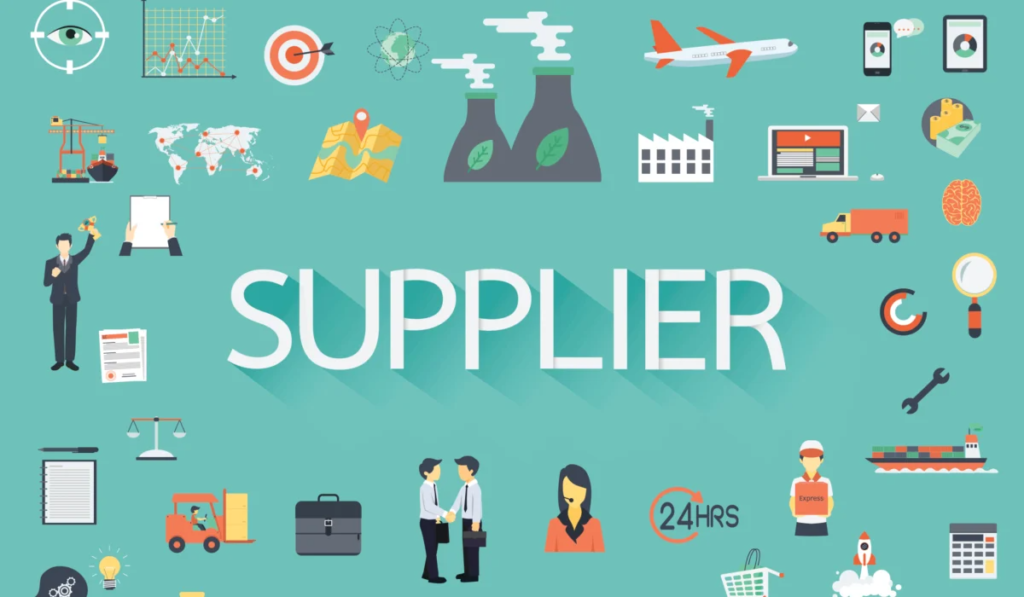As a small business owner, one of the most important aspects of your job will be perfecting your supply chain. And the first step in doing this will be refining the process of strategic sourcing.
In the following guide, we’ll break down everything you need to know about successful sourcing as a small business owner — including how to find the best products, packaging, delivery, and even customers.
First thing’s first: What is sourcing?
Post Contents
What Is Sourcing in Business?

Sourcing is the foundation of your supply chain, and in fact, the sourcing process actually builds your supply chain.
Basically, the process assesses and identifies the best suppliers for your company’s ultimate business goals. Naturally, not all suppliers will be the right fit.
It’s up to you to evaluate the market and seek out suppliers who can uphold — and hopefully even add something — to your success.
Once the sourcing process concludes, the necessary agreements and contracts should be signed by the companies that were duly chosen.
Sourcing Vs. Procurement
One thing that many new business owners get confused about is sourcing versus procurement. The two go hand-in-hand, and to be sure, they are extremely similar.
But let’s break down the differences because there certainly are some.
Basically, sourcing is the process of figuring out which suppliers your company should work with in order to maintain your supply chain.
This “figuring out” process involves extensive research, vetting, comparing and contrasting, and finally, selecting.
On the other hand, procurement is much more basic. Procurement simply refers to the process of actually acquiring the things you need from the sources that the sourcing process chose. It focuses more on management after the fact.
Procurement, on the whole, could mean only the procurement of goods, or it might also include the procurement of materials, supplies, and inputs.
Naturally, both the sourcing process and the procurement process need to work together.
Strategic Sourcing
When discussing sourcing and business, it’s also important to understand the concept of strategic sourcing.
This is a more formalized type of sourcing that is growing in popularity. It involves collecting data and looking broadly at a company’s goals so as to better understand their unique needs long-term.
Through strategic sourcing, a company can adapt to a more thoughtful procurement process — one that looks to ensure a company’s long-term business goals will be met through the continued functionality and constant improvement of the supply chain.
Knowing What to Look for in a Supplier

If you are a small business owner, it will probably be up to you to conduct the majority of your company’s sourcing practices. Larger companies often have sourcing teams who can manage this aspect of business.
Basically, you’re going to be selecting suppliers, so the first step is knowing which suppliers you’ll need.
You may find that, within this first step, you start with one list, and by the time you’re done investigating and researching potential suppliers, you have a new list of suppliers you’re going to need. That’s part of the process.
Now, it’s time to take a look at potential suppliers and figure out which will be best for each stage of your supply chain. Keep in mind that the reputation of your business and brand is on the line here.
If a supplier messes up a delivery, for example, your customer won’t blame the supplier; they’ll blame you. Moreover, you want to be able to have a friendly, courteous, and mature working relationship with your vendors.
You’ll want to look for the following qualities in a potential supplier:
- Excellent customer and client reviews
- Upfront quotes with detailed itemizations
- Prices the company is willing to negotiate
- Financial stability
- Extensive experience in the industry
- Flexibility with orders
- Promptness and orderliness
- Overall friendliness and courteous customer service
Conducting Research
In the end, whether or not you choose top-quality vendors to work with will depend on how much energy and time you put into the research and assessment phase of the sourcing process. Naturally, this isn’t an easy job, and it’s going to take some time.
If you have any colleagues or employees who are able to help, it’s a good idea to enlist their efforts as well, so that you don’t have to do it all on your own.
When discussing pricing, delivery, and other negotiations with potential vendors, always be upfront. Suppliers want a good working relationship with you, their clients, as well, so it’s important that you put your best face forward.
Still, you’re coming to them for their services, and you’ll be paying them handsomely for those services. So, the ultimate choice is yours.
If you’re new to the sourcing process, don’t worry. With time, you’ll develop lasting business-to-business relationships that will help your business grow.
Until then, work hard to establish the best-possible connections with your suppliers, and this will ensure a robust supply chain from the start.






























